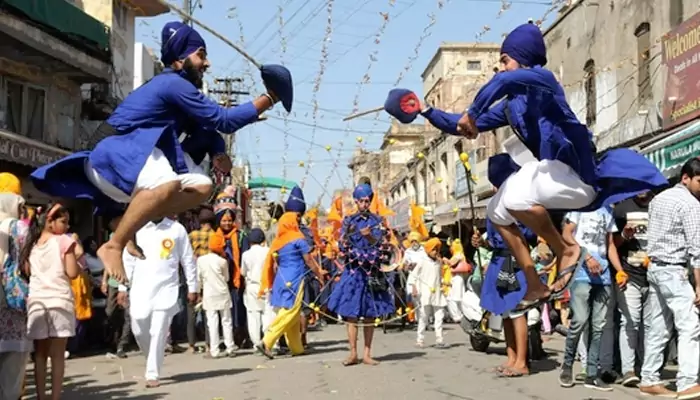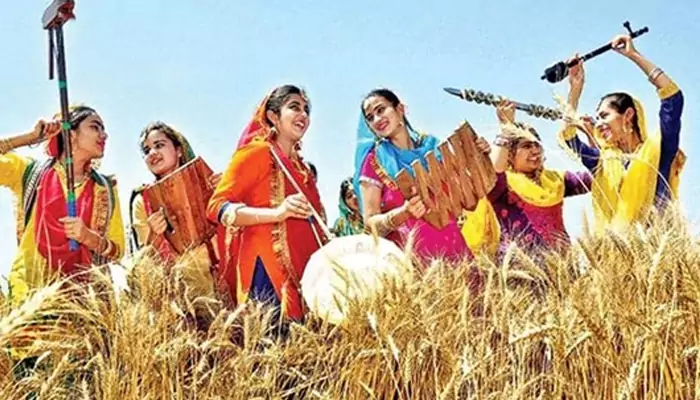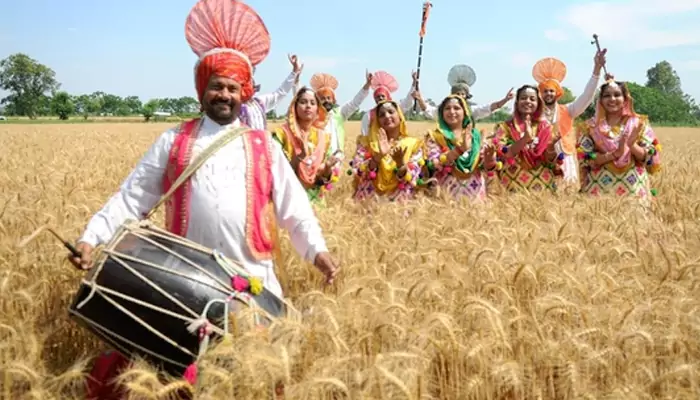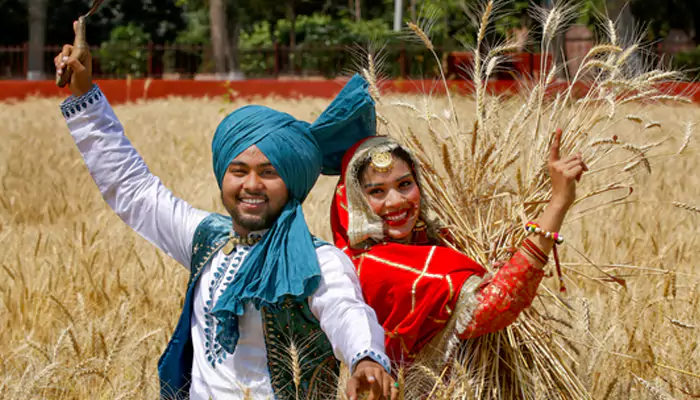
Baisakhi isn’t just about harvest and festivities—it’s about dancing your heart out! Dive into the vibrant world of Bhangra and Gidda, the energetic dance forms that make this Punjabi celebration unforgettable.
Baisakhi is more than just a harvest festival—it’s a whirlwind of joy, color, and infectious energy. And what’s the heartbeat of these celebrations? The electrifying dance forms of Bhangra and Gidda! These dances don’t just move to the rhythm; they tell stories, express emotions, and bring communities together.
So, let’s take a lively stroll through the world of Bhangra and Gidda, and see why they’re the soul of Baisakhi!

If there’s one dance that screams Punjabi spirit, it’s Bhangra. Born in the fertile fields of Punjab, this high-energy dance was originally performed by farmers to celebrate the harvest. Today, it’s a global phenomenon, but its roots remain deeply tied to Baisakhi.
Bhangra isn’t just a dance; it’s a celebration of life. The faster the dhol beats, the wilder the moves get!

While Bhangra is often dominated by men, Gidda is where Punjabi women shine. This dance is all about elegance, storytelling, and playful camaraderie. Performed in circles, Gidda is a beautiful mix of rhythmic clapping, twirls, and poetic verses (boliyan).
Gidda isn’t just dance—it’s a conversation in motion, filled with laughter, teasing, and sheer joy.

No Bhangra or Gidda is complete without foot-tapping music. The dhol is the undisputed king, but other instruments like the tumbi, algoza, and chimta add their own magic.
And let’s not forget the boliyan—short, witty verses sung during Gidda that add humor and emotion. Whether it’s a playful jab at a sister-in-law or a heartfelt tribute to Punjab, these lyrics make the dances even more engaging.
During Baisakhi, villages and cities across Punjab (and beyond!) come alive with dance performances. From community fairs to grand processions, Bhangra and Gidda take center stage.

Beyond the fun, Bhangra and Gidda are cultural treasures. They keep traditions alive, foster community bonds, and showcase Punjab’s zest for life. In a world that’s always rushing, these dances remind us to pause, celebrate, and move with joy.
Whether you’re a pro or a first-timer, Baisakhi is the perfect time to join in. So, next time you hear the dhol, don’t resist—jump in, clap along, and let the rhythm take over. After all, Bhangra and Gidda aren’t just dances; they’re expressions of pure, unbridled happiness. Happy Baisakhi—let the dancing begin!